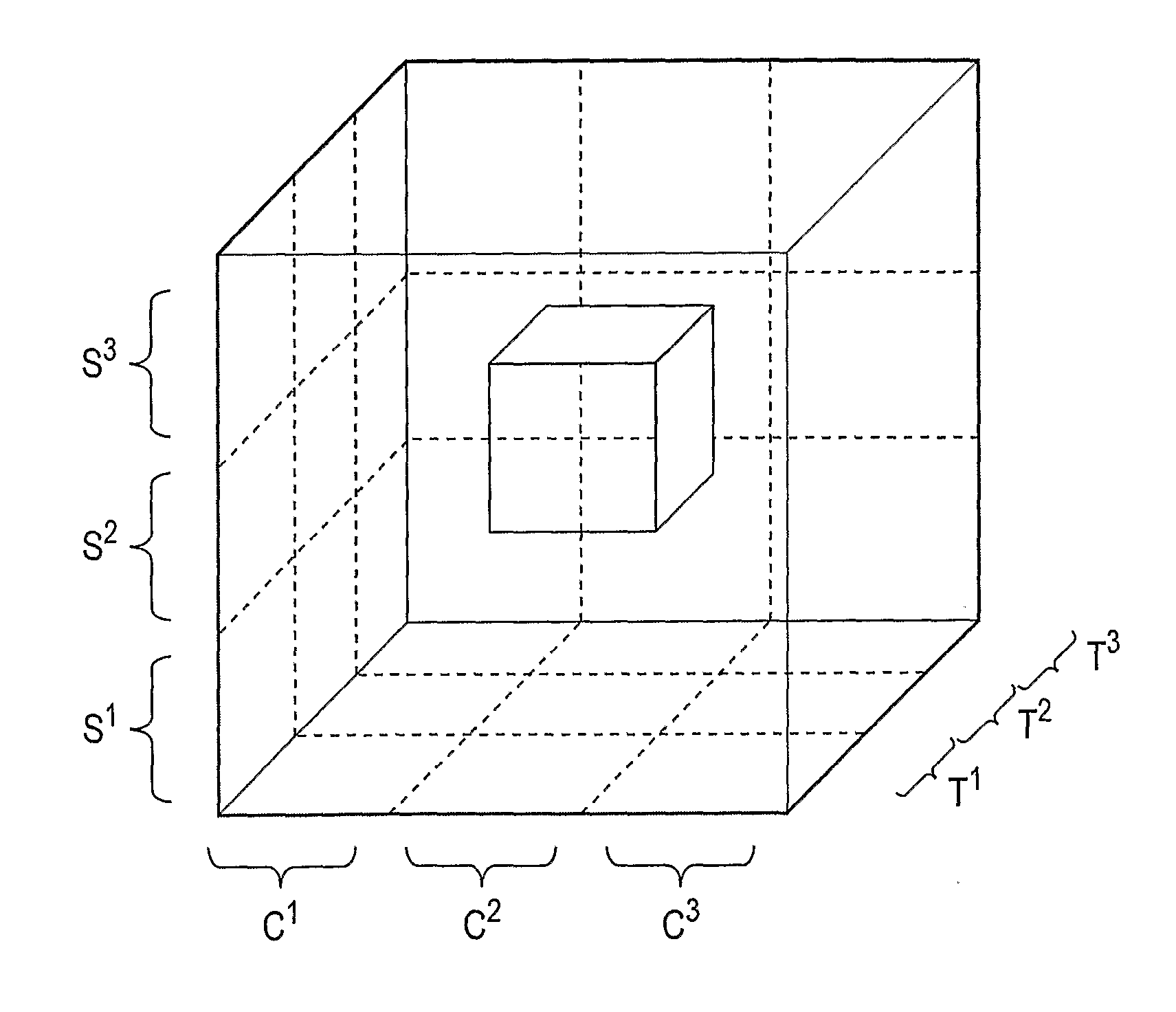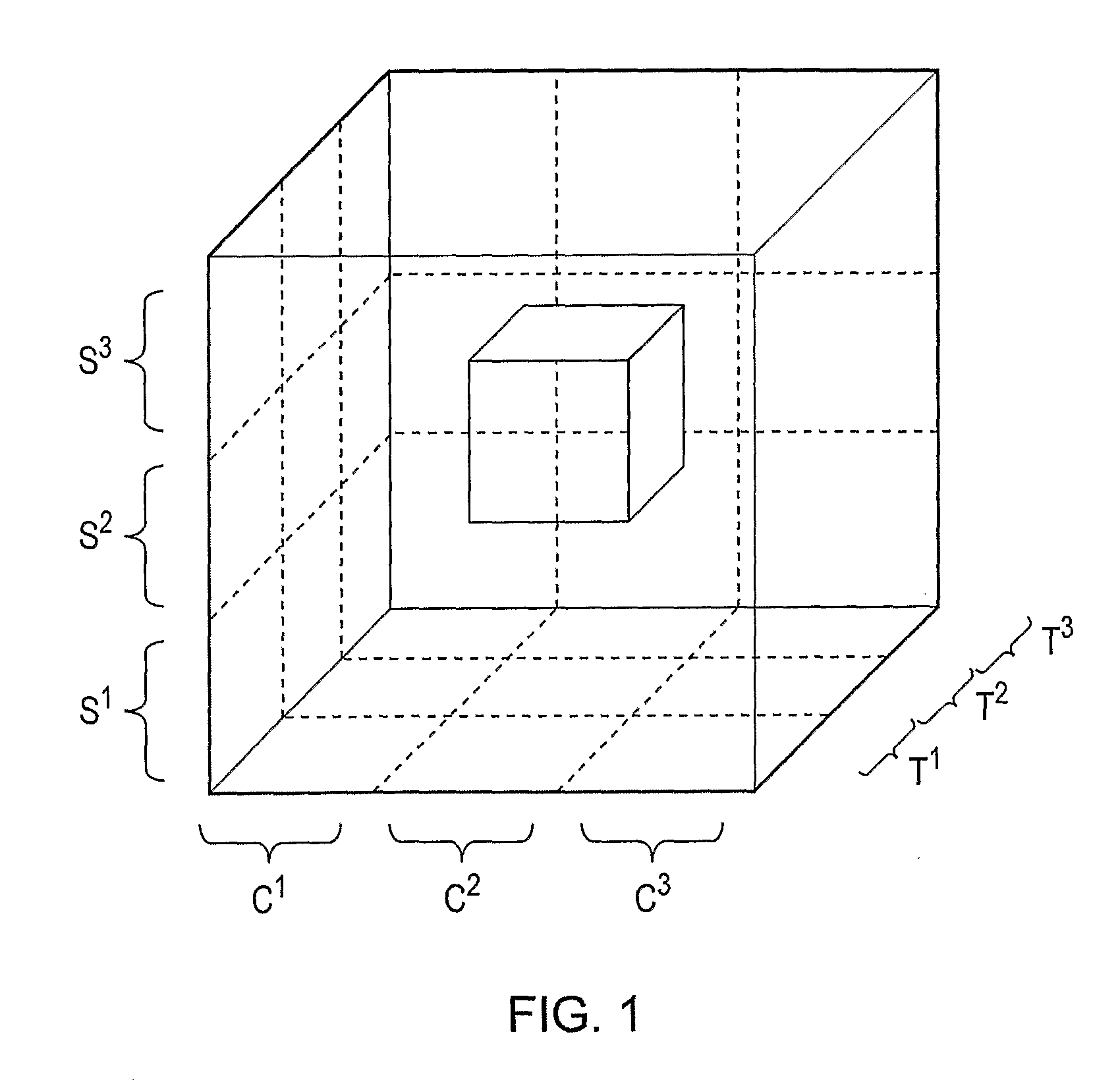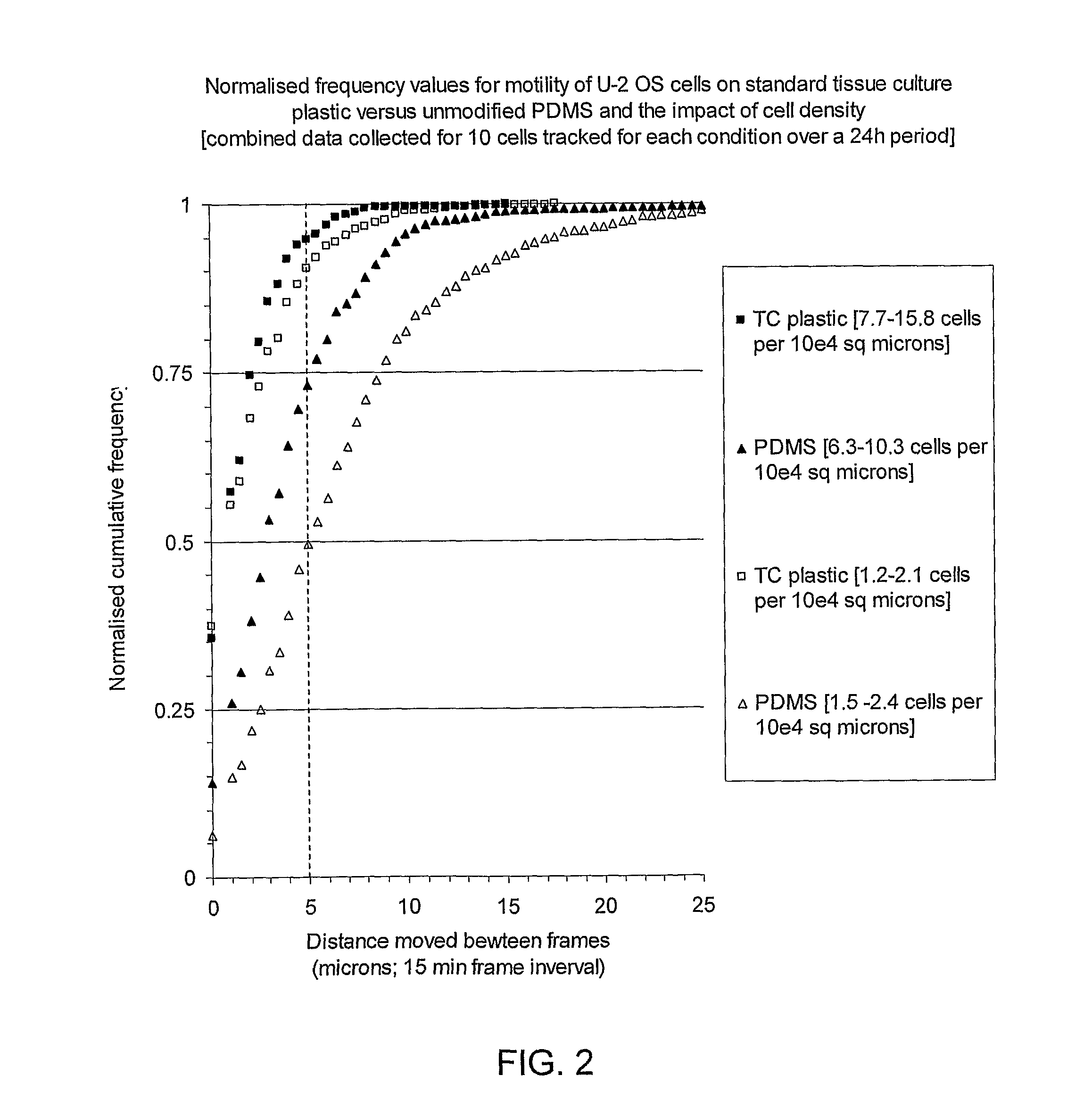A
resultant problem is that the cell is in a 3-D cluster in these circumstances, making individual
cell analysis difficult, fixation problematic and divisional history effectively impossible to determine.
A cell
population can contain a range of proliferation components (i.e., not all cells behave the same) causing problems for identifying and determining the proportion of cells that have not undergone
cell division as distinct from those that have undergone rounds of division to produce cell lineages, particularly if the division event has not been visually ‘captured’ during the analysis.
Further, inherent or induced differences in proliferation rates between cells can impose asynchrony, demanding kinetic analyses of single cells.
Motility can cause a problem for cell re-identification when re-visiting the original location of a cell at a later time point and furthermore potential removal of a cell from the enumerated fraction (see also cell incursion).
Cell loss—this causes a problem for enumeration of a fraction of cells that may be lost (e.g., as the result of cell death) in mixed populations which are also undergoing cell proliferation.
Cell incursion—relating to the adventitious appearance of cells from outside a field undergoing analysis / observation (e.g., via cell
motility or a process of detachment and reattachment) effectively resulting in a ‘
contamination’ of a field of interest increasing the
noise in the
system.
This can cause problems for cell identification particularly when applying
image analysis or segmentation algorithms, whereby
cell shape changes may act to confound analysis procedures or reduce their efficiency.
Microniche exhaustion of growth and survival factors—when cells are constrained within
diffusion-limited circumstances (e.g., in a micropocket), there is the potential to limit access to vital molecules in the supporting medium and access to analytical reagents.
Further, separation of cells into separated micro-niche areas effectively reduces local
cell density and may thereby reduce the ability of cell cultures to ‘condition’ to their overall environment.
This approach leads to further complications with respect to increased cell interactions that can compromise
assay performance.
Another common solution is to increase the number of observed views of a
population although this leads to an increase in the amount of data collected, which must then be stored.
Uncertainty in terms of
progenitor identification and descendant relationships introduces
noise into an analytical
system.
Such microwells could be used for adherent cells, depending upon the
biocompatibility of the substrate but do not intrinsically
control cell contacts.
A
resultant problem is that the cell now undergoes changes associated with the adhesion responses and such selective capture does not reveal divisional history.
However, within such micro-well formats, cell orientation is not ordered to enhance the means of analysis (temporal order of events) or to allow the reporting of a cell with a deduced divisional history.
Clonogenic potential may be limited according to
cell type.
According to the type of culture, cells can become limited in their proliferation potential by local conditions such as
growth factor exhaustion and the operation of
contact inhibition.
This approach has the draw-back that a clonogenic assay typically requires 1-3 weeks of incubation to stabilise a macroscopic colony and uses low plating densities that can both compromise clonogenicity and
restrict the ability to identify progenitors in sparse fields.
Problems also relate to the exhaustion of medium during cultivation and the production of
satellite colonies due to cell detachment and re-attachment at a different location.
Some highly motile cells can act to diffuse colony structure and make colony recognition problematic.
The approach is labour-intensive for manual and semi-manual tracking and can potentially result in deleterious effects on cell cultures due to the
high frequency of light exposures required to capture and therefore register a transient event such as
cell division.
Time-lapse imaging typically generates large amounts of image-based information which results in problems for short- and long-term data storage, analysis and access.
Furthermore, the acquisition platform is often continuously occupied, resulting in limitations for assay
throughput.
 Login to View More
Login to View More  Login to View More
Login to View More 


